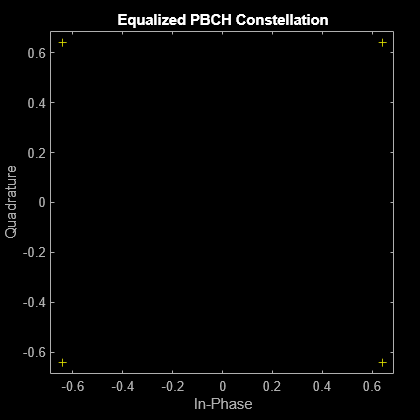nrEqualizeMMSE
Minimum mean-squared error (MMSE) equalization
Description
[
applies MMSE equalization to the extracted resource elements of a physical channel
eqSym,csi]
= nrEqualizeMMSE(rxSym,hest,nVar)rxSym and returns the equalized symbols in
eqSym. The equalization process uses the estimated channel information
hest and the estimate of the received noise variance
nVar. The function also returns the soft channel state information
csi.

